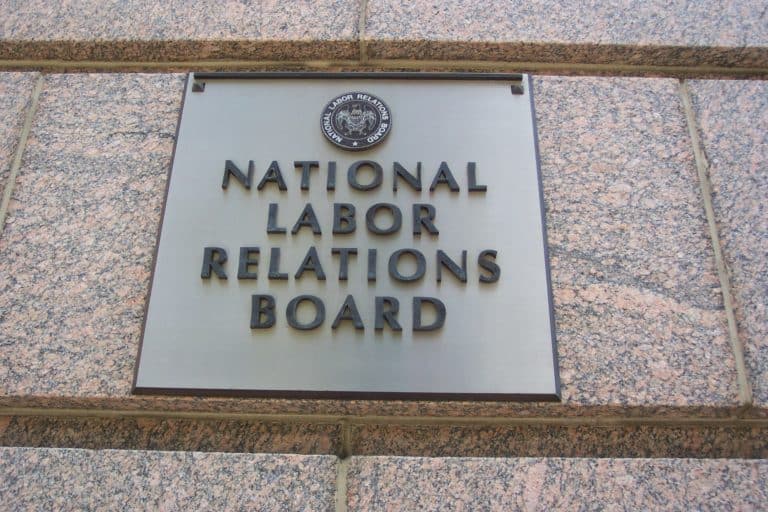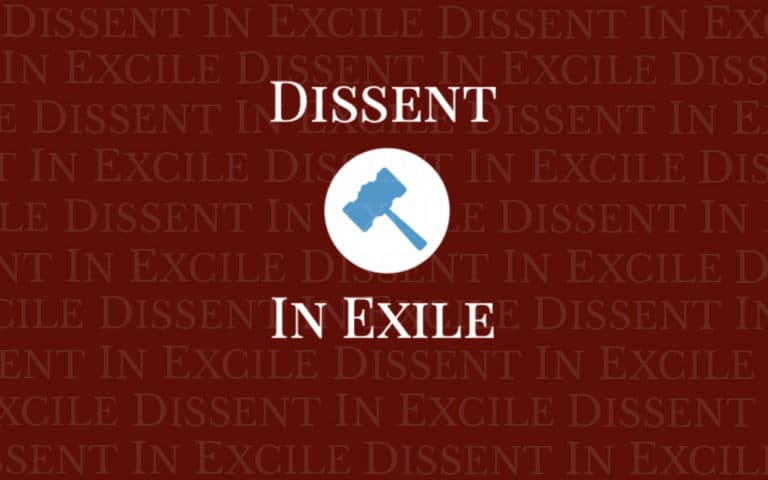Maddy Joseph is a student at Harvard Law School.
One week last December, President Trump’s NLRB reversed five significant Board precedents. It was the end of Board Chairman Phil Miscimarra’s term, and the Trump Administration had taken over less than a year before. The reversals themselves weren’t surprising — departing Board Chairs and new Administrations often change course.
What was striking were the Board’s departures from basic procedural norms. The Board:
- Failed to take any public input before changing important standards for determining appropriate bargaining units, for unilateral changes by employers, on ALJ settlement authority, and on civility rules, (and the Board’s attempted sea change to joint-employer liability in the fifth case was vacated after it was discovered that Board Member Emanuel should have been recused);
- Overturned precedents that weren’t challenged by the parties;
- Gave no notice — to the parties or to anyone else — that precedents were being reconsidered.
At the time, Sharon Block and Andrew Strom discussed the Board’s partisan motivations and the terrible consequences of this “December massacre” for workers. We can expect the Board’s Republican majority to continue to dismantle Board policies that protect workers. The Board shouldn’t be able to do so summarily.
Yet what the Board did here didn’t clearly violate any express, existing procedural rule. So what constraints do exist on processes of this sort? Neither the procedural requirements of the APA and the NLRA nor the Due Process Clause provide meaningful limits on this type of decisionmaking. Where unions or workers can get it, judicial review of the Board’s decisions under § 706 of the APA may be the most meaningful constraint.
The NLRA and §§ 557 and 556 of the APA do impose onerous procedural requirements on adjudications. But these requirements are satisfied by initial proceedings in front of Administrative Law Judges, before cases reach the Board itself. For example, the NLRB is often required to afford hearings with particular features, like the right to examine witnesses. (Different regulations govern different proceedings; here’s an example regulation.) The Board does review ALJ decisions that the parties object to. But nothing requires the Board to hold its own hearing or to take public input, even when it plans to announce a new standard.
That said, the Board’s practice, at least in recent years, has been to invite amicus briefs in significant cases. The Board recently formalized this practice, adopting a procedural rule allowing that “The Board may direct the Executive Secretary to solicit amicus briefs.”
This practice, or something like it, seems essential to fair and effective policymaking. The Board’s method of announcing generally applicable standards through adjudication rather than through rulemaking has been criticized and debated for decades, even as it has been endorsed by the Supreme Court, in NLRB v. Bell Aerospace Co. One problem, as Bell Aerospace noted, is that adjudication doesn’t “provide the Board with a forum for soliciting the informed views of those affected in industry and labor before embarking on a new course.” On this basis, Board Member McFerran’s dissent in one of the December cases argued that the Board had run afoul of Bell Aerospace’s premonition that in some “situations . . . the Board’s reliance on adjudication would amount to an abuse of discretion or a violation of the Act.” But this exception has never been applied.
Plus, there’s no way to hold the Board to the compensating practice of calling for amicus briefs. Unwritten procedural norms aren’t directly enforceable against agencies. And written procedural rules like the amicus one generally aren’t enforceable either. A slippery doctrine often known as the Accardi rule does require agencies to follow some of their own internal rules. Accardi is generally applied only to legislative rules (that is, those adopted through notice and comment), but some lower courts, relying on a Supreme Court case from the 1970s, Morton v. Ruiz, have held that Accardi extends to “[p]rocedural rules that affect individual rights.” Even so, it’s difficult to see how the NLRB would be bound by the discretionary language of the amicus rule.
More egregious than the Board’s failure to take public input was its failure to give the parties notice and an opportunity to comment on whether the precedents should be overturned. Debating this issue in one of the December cases, the majority emphasized that the Board’s responsibility was “to apply the law as we believe it should be, regardless of whether any party has directly challenged” the relevant precedent. But the dissent suggested in a footnote that failing to hear at least the parties on overruling the precedent “could raise due process concerns.” Both the dissent and the majority here analogized the NLRB to an appellate court. Although law review articles have criticized courts for overruling precedents sua sponte, the Supreme Court has repeatedly endorsed its own and other appellate courts’ power to do so.
But the very idea that new standards can be developed and retroactively applied through administrative adjudication does remain controversial. For example, at this fall’s Federalist Society Convention, White House Counsel Don McGahn, in a remarkable jeremiad against administrative agencies said this of the NLRB: The Supreme Court (in Chenery II) “has empowered agencies to issue retroactive regulations through adjudication,” a move that has enabled “agencies like the NLRB to announce new rules during enforcement actions without any fair notice to the parties being regulated.”
McGahn exaggerates the extent to which the NLRB has free reign. Recognizing these fairness issues, the NLRB sometimes applies new rules only prospectively. Not to mention, lower courts have thrown out, as violating due process or as arbitrary and capricious, NLRB and other agency enforcement actions for being unfairly retroactive. Courts apply a balancing test to evaluate the extent to which application of the new rule would upset and injure the party’s expectation interests.
The balancing test looks to the fairness of the policy change and not to the fairness of the process by which that change came about, but the Board’s failure to afford parties an opportunity to be heard on the change compounds any retroactivity concerns. The problem is that these constraints on retroactivity are less likely to be invoked in periods of deregulation like this one. The doctrine is designed and has been applied to protect regulated parties. But what employer would challenge the retroactive application of a more lenient rule?
Even if procedural rules don’t prevent the Board from doing what it did here, the Board’s decisionmaking processes are indirectly constrained through judicial review under § 706 of the APA. Because of how the Board blends factfinding, legal interpretation, and policymaking in adjudication, the applicable standards of review are muddled. But the Supreme Court has at least made clear that Board policymaking, even when framed as adjudicatory factfinding, is subject to the same “reasoned decisionmaking” requirements that are more often associated with agency policymaking through rulemaking. The same standard of reasoned decisionmaking should apply when the Board makes policy while purporting to interpret the NLRA.
The dissents in the December cases emphasized the ways in which the Board’s decisions deviated from the ideal of reasoned decisionmaking. For example, in the civility rules case, the dissent pointed to the majority’s inadequate explanation for why the “facts and circumstances” that justified the old rules no longer held and to the majority’s failure to consider all aspects of the problem. Deficient process, the dissent emphasized, produces deficient reasoning.









Daily News & Commentary
Start your day with our roundup of the latest labor developments. See all
April 24
Workers in Montreal organize the first Amazon warehouse union in Canada and Fordham Graduate Student Workers reach a tentative agreement with the university.
April 23
Supreme Court hears cases about 10(j) injunctions and forced arbitration; workers increasingly strike before earning first union contract
April 22
DOL and EEOC beat the buzzer; Striking journalists get big NLRB news
April 21
Historic unionization at Volkswagen's Chattanooga plant; DOL cracks down on child labor; NY passes tax credit for journalists' salaries.
April 19
Alabama and Louisiana advance anti-worker legislation; Mercedes workers in Alabama set election date; VW Chattanooga election concludes today.
April 18
Disneyland performers file petition for unionization and union elections begin at Volkswagen plant in Tennessee.